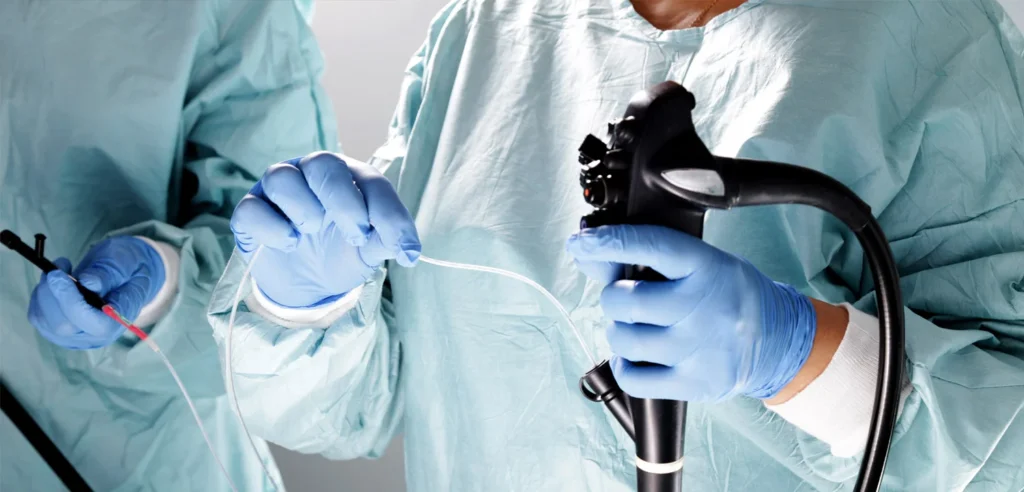Flexible endoscopes are vital tools in modern medicine, enabling healthcare professionals to examine internal organs with minimal invasiveness. These devices allow for accurate diagnosis and treatment in a range of medical fields. A key feature that makes flexible endoscopes so effective is their channels. In this article, we’ll explore what flexible endoscope channels are, how they work, and why they are critical to the success of various medical procedures.
What Are Flexible Endoscope Channels?
Flexible endoscope channels are internal pathways within the device that allow instruments or fluids to be passed through during an examination or procedure. These channels are essential for tasks such as tissue sampling, fluid suction, and irrigation. They enable doctors to perform a wide range of functions with a single tool, making minimally invasive procedures much more efficient.
Types of Flexible Endoscope Channels
Flexible endoscopes are typically equipped with multiple channels, each designed for a specific function. The main types of channels in a flexible endoscope include:
- Biopsy Channel
This channel is used to insert biopsy forceps or other instruments to collect tissue samples for diagnostic purposes. - Suction Channel
This channel allows fluids such as blood, mucus, or other debris to be suctioned out from the body, ensuring a clearer view during the procedure. - Irrigation Channel
The irrigation channel is used to introduce fluids, like saline or antiseptic solutions, into the body to cleanse the area and improve visibility during an examination. - Light Guide Channel
This channel transmits light to illuminate the area being examined, providing necessary visibility for accurate diagnosis and treatment.
Materials Used in Flexible Endoscope Channels
The materials chosen for flexible endoscope channels are crucial for the device’s overall performance. High-quality materials ensure the channels are durable, flexible, and resistant to wear over time. Some common materials used include:
- Stainless Steel: Often used for the inner components of the channels, stainless steel is known for its strength, corrosion resistance, and durability.
- Polymers and Silicone: These flexible materials are commonly used for the outer casing of the channels. They are lightweight and resistant to environmental factors like heat and chemicals.
The combination of these materials ensures that flexible endoscopes can withstand frequent use and harsh cleaning processes.
The Importance of Channel Design and Functionality
The design of flexible endoscope channels directly influences the device’s performance. A well-designed channel system facilitates smoother procedures, greater precision, and better outcomes for patients. In contrast, a poorly designed system can lead to complications such as blockages or reduced functionality.
Cleanability and Maintenance
One of the key challenges of using flexible endoscopes is ensuring that the channels remain clean and free from obstructions. Since the channels are exposed to bodily fluids, tissue, and debris, they require regular cleaning and maintenance.
Many modern flexible endoscopes are designed with removable or flushable components to make the cleaning process easier. Regular cleaning is essential to prevent contamination and to ensure that the endoscope performs optimally during medical procedures.
Challenges with Flexible Endoscope Channels
While flexible endoscopes are extremely useful in medical diagnostics and treatments, they come with their own set of challenges. These challenges primarily relate to the wear and tear that occurs with frequent use.
Clogging and Obstructions
One of the most common issues with endoscope channels is clogging. This often occurs when debris, such as tissue or mucus, gets trapped inside the channels. Clogs can impede the function of the endoscope, making it difficult to perform tasks such as suction or biopsy.
To prevent clogs, it’s essential to regularly flush the channels with appropriate solutions. Proper cleaning and maintenance help ensure the device remains fully functional and ready for use.
Wear and Tear
Flexible endoscopes are subjected to significant stress, especially in high-use environments. Over time, the channels can degrade, leading to leaks, loss of flexibility, or reduced ability to perform procedures effectively. Regular inspections and timely repairs can prevent more severe damage and extend the life of the endoscope.
Channel Kinking
Another potential problem is the kinking or bending of flexible endoscope channels. This can occur when the materials used are not sufficiently durable or when the device is mishandled. Kinking reduces the flexibility of the endoscope and can prevent doctors from reaching the areas they need to examine.
To avoid this issue, manufacturers use materials such as high-grade stainless steel and flexible polymers that maintain the device’s structure and functionality.
How Flexible Endoscope Channels Improve Medical Procedures
Flexible endoscopes, with their versatile channels, play a crucial role in advancing minimally invasive medical procedures. These channels allow healthcare professionals to perform a variety of tasks, all within the confines of a single, flexible instrument.
Minimal Invasive Procedures
Flexible endoscope channels are integral to minimally invasive surgeries, which involve smaller incisions and faster recovery times. By using an endoscope, doctors can examine and treat patients without the need for large cuts, reducing the risks of infection and shortening hospital stays.
Enhanced Diagnostic Capabilities
One of the greatest benefits of flexible endoscopes is their ability to provide real-time visuals of the internal body. The light guide channels illuminate the examination area, allowing for clear and accurate diagnoses. Additionally, the biopsy and suction channels provide physicians with tools to obtain tissue samples and remove unwanted fluids, further enhancing diagnostic accuracy.
Precision and Safety
Flexible endoscope channels also help ensure that medical procedures are precise and safe. The ability to control multiple instruments within the same device reduces the need for additional equipment, minimizing patient risk and improving surgical outcomes.
The Future of Flexible Endoscope Channels
Advancements in medical technology continue to improve flexible endoscopes and their channels. As the need for less invasive procedures grows, we can expect further innovations to make these devices even more effective.
New Materials and Designs
Researchers are exploring the use of advanced materials that could enhance the performance of flexible endoscopes. For example, next-generation polymers may offer greater flexibility and resistance to wear, while new coatings could reduce the risk of bacterial contamination.
Smaller and More Precise Channels
In the future, flexible endoscopes may become even more compact, with narrower channels that allow for less invasive procedures. This would open up new possibilities for treating areas that were previously difficult to reach.
Integration of Smart Technology
Another exciting development is the potential integration of smart technologies. Future endoscopes may feature sensors or artificial intelligence that can analyze images in real time, making it easier for doctors to make quick, accurate diagnoses during procedures.
Conclusion
Flexible endoscope channels are a vital part of modern medical procedures. These channels allow for precise and minimally invasive treatments, which can improve patient outcomes and reduce recovery times. Understanding the types of channels, their materials, and their importance in medical procedures is essential for appreciating the role of flexible endoscopes in healthcare.
As technology continues to evolve, we can expect even more advanced flexible endoscope designs, further improving the effectiveness and efficiency of medical procedures.







